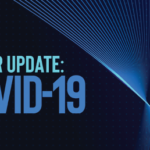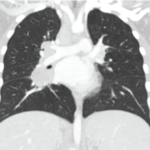Rheumatologists may need to downsize and restrict patient care if Congress doesn’t act to block significant cuts to Medicare reimbursement rates totaling 9.75% in 2022.
The ACR/CHEST ILD Guidelines in Practice, a video
In collaboration with the American College of Chest Physicians, the ACR released two new comprehensive guidelines aimed at improving the screening, monitoring, and treatment of patients with interstitial lung disease (ILD) secondary to systemic autoimmune rheumatic diseases (SARDs). Recently, Sindhu R. Johnson, MD, PhD, professor of medicine at the University of Toronto, Canada, director of the Toronto Scleroderma Program and principal investigator for the guideline, and Elana J. Bernstein, MD, MSc, Florence Irving associate professor of medicine in the Division of Rheumatology at Columbia University, New York City, and co-first author, presented a webinar to talk about how the guidelines were developed and present some of the recommendations and their rationale: Watch the recording now!

Ethics Forum: To Test or Not to Test?
“Maria” is a 54-year-old woman with seropositive rheumatoid arthritis, as well as hypertension and hyperlipidemia. She is a new patient in your clinic following a move across the country to live with her children on a farm in a rural area of the Midwest. At her first visit, three months ago, you and Maria agreed—through…

Lively, Practical Training at Advocacy 101
Amid spirited discussions on drug pricing and insurance challenges, participants got hands-on experience advocating for current bills regulating prior authorization and pharmacy benefit managers.

A Look Inside the Advocate Experience at Advocates for Arthritis
Eric Dein, MD, shared rheumatology perspectives with five congressional offices on Sept. 28 as part of the virtual Hill Day. Read his hour-by-hour account, including staffer education, legislative requests and prior authorization woes.
Nonserious Infection Rates with Biologics Used to Treat RA
Bechman et al. set out to describe the frequency and predictors of nonserious infections and compare incidence rates across biologic DMARDs. They found all bDMARDs are associated with a greater risk of nonserious infection, with differences observed between agents. Although unmeasured confounding must be considered, the magnitude of effect is large.

Inspired by Healthcare Disparities to Advocate for Change
Seeing the challenges her rural patients faced in accessing specialty care, Amanda Schnell, MD, was inspired to make advocacy an integral part of her work at the University of Alabama at Birmingham.

RheumPAC Advocacy Fund: Effecting Change
Professional practices, state societies and other organizations can support RheumPAC’s work with corporate funds through the RheumPAC Advocacy Fund.

HIPAA and PHI Cybersecurity Best Practices in the COVID-19 Era
When the first SARS-CoV-2 case was recorded, it was difficult to appreciate the extent to which cybersecurity concerns, particularly in connection to the protection of patient healthcare data, would enter into mainstream consciousness. Although many practices and healthcare organizations have recently adopted additional measures to safeguard patients’ protected health information (PHI) through expanded cybersecurity monitoring,…

Minnesota Joins Dakotas to Form Growing Rheumatology Association
A relatively new state association, the Rheumatology Association of Minnesota and the Dakotas (RA-MD), held its first meeting in 2016. Five years later, the association president, Jody Hargrove, MD, a board-certified rheumatologist with Arthritis and Rheumatology Consultants PA, Edina, Minn., says the group’s membership fluctuates between 80 and 100 rheumatology professionals. RA-MD has members from…

A Look Back at the ACR’s Strong Response to COVID-19
We are now a year-and-a-half into the COVID‑19 pandemic, and rheumatologists and rheumatology professionals are still facing some of the same challenges that began in spring 2020, as well as new ones. Most recently, we learned that COVID‑19 vaccine efficacy is reduced in some patients on immunosuppressive therapies and the need for additional immunization is…
- « Previous Page
- 1
- …
- 48
- 49
- 50
- 51
- 52
- …
- 250
- Next Page »
